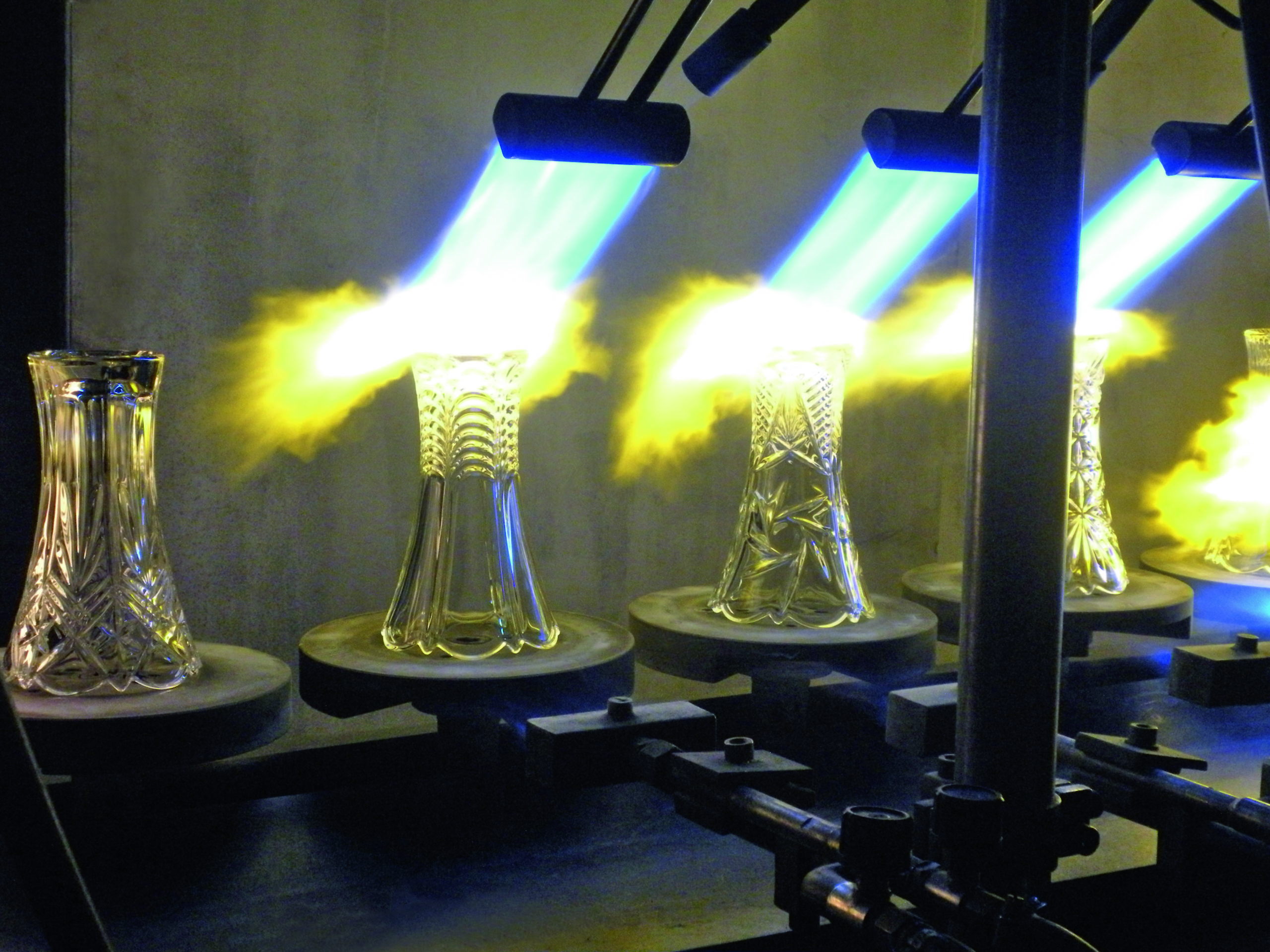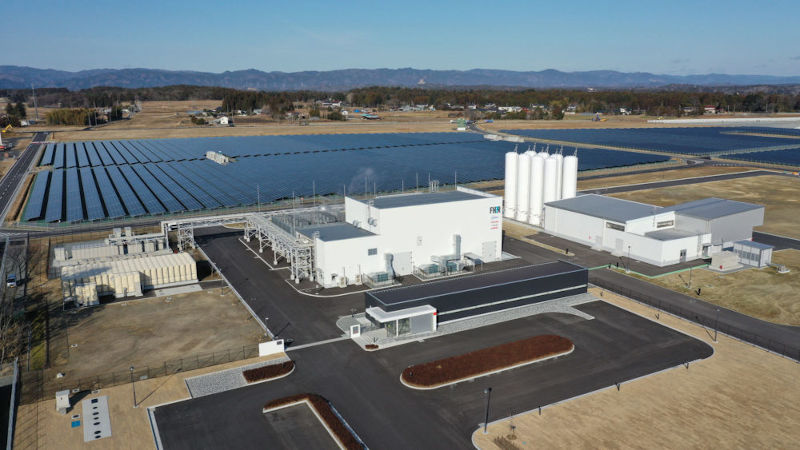
BVR & MT - Green hydrogen (which uses renewable energy to produce hydrogen from water) is growing strongly globally. Proponents argue that this fuel could play a key role in removing carbon from difficult electrification sectors such as long-haul transportation, aviation and heavy industry.
Saudi Arabia is building a futuristic city called Neom in the Hong Hai desert. This $ 500 billion city will be home to a million people. And what energy products will be used to power this city and sell to the world? Not oil. The Saudis are working on something called blue hydrogen - a carbon-free fuel that is created from water using electricity that is produced in a renewable way to separate hydrogen molecules from molecules. oxygen.
This summer, a US gas giant Air Products & Chemicals announced that it had built a green hydrogen plant in Saudi Arabia for the past four years as part of Neom. The plant is powered by 4GW of energy from wind and solar projects stretching across the desert. It is the largest green hydrogen project in the world - and many factories in Saudi Arabia are planned.

Green hydrogen? The Saudis are not alone in believing that it is an important future energy. While this fuel is barely noticeable in the United States, there is a blue hydrogen fever around the world and many companies, investors, governments and the environment believe it to be a source of energy. It will put an end to fossil fuel domination and slow the world's warming trajectory.
"Green hydrogen is very promising," said energy analyst Rachel Fakhry of the Natural Resources Defense Council. Experts acknowledge wind and solar energy can power homes and electric cars, green hydrogen could be the ideal energy source for energy-intensive industries like concrete production and steel as well as more difficult to electrify parts of the transportation industry. "The last 15% of the economy is hard to clean - aviation, ocean shipping, manufacturing, long-distance transport," Fakhry pointed out. Green hydrogen can do that ”.
Europe, economically struggling with Russia's high energy prices and reliance on natural gas, is scrambling for green hydrogen by funding the construction of electrolysis plants and other hydrogen infrastructure. Germany allocates the largest share of the clean energy stimulus fund for green hydrogen. "That's the missing piece of the puzzle for a completely carbon-based economy," the European Commission stated in a July 2020 strategy document.
There has been a lot of talk about hydrogen's potential as a fuel source for decades but the technology has never been developed on a large scale for many reasons. The widespread adoption of blue hydrogen technology has an obstacle that requires renewable energy, requiring the generation of renewable energy to expand to power power plants that split water into hydrogen and oxygen. Blue hydrogen is also difficult to store and transport without pipes. And now in some places, such as the United States, hydrogen is much more expensive than other fuels like natural gas.
Despite its advantages, "this fuel has no small drawbacks," said Bloomberg New Energy Finance analyst Michael Liebreich and a skeptic blue hydrogen.
“Green hydrogen does not occur in nature, so it requires energy to separate. For storage, it must also be compressed at 700 times the atmospheric pressure, cooled to 253 degrees C ... Blue hydrogen contains 1/4 of the energy per unit volume of natural gas ... It can melt metals; escapes through the smallest leaks and explodes easily ”.
Energy analyst Ben Gallagher of Wood McKenzie and research on blue hydrogen said the fuel is so new that the future is still unclear. “Nobody has any real idea what's going on here. Just speculation at this point. Currently, it is difficult to see this as a new oil. However, it can form an important part in the total fuel mix.
Hydrogen is the most abundant chemical in the universe. Two hydrogen atoms combine with one oxygen atom to create water. However, hydrogen alone is an odorless, tasteless and highly flammable gas. Hydrogen comes from methane - usually from natural gas, but also from coal and biomass. But the CO2 released in the process of making hydrogen from the methane is not climate friendly; The hydrogen produced in this way is called gray hydrogen.
Green hydrogen is a newcomer in the hydrogen block and does not cause CO2 because it is produced by renewable energy. Furthermore, using renewable energy to generate fuel can solve the continuity problem that still blocks wind and solar energy, which is essentially an efficient means of storing. When the demand for renewables is low, during spring and fall, excess electricity can be used to power the electrolysis needed to separate hydrogen and oxygen molecules. The hydrogen can then be stored or sent down a pipeline.
Such advantages are driving an increasing global interest in blue hydrogen. Across Europe, the Middle East and Asia, many countries and companies are favoring this high quality fuel. The US lags behind because other forms of energy (such as natural gas) are much cheaper but several new projects are underway, including a green hydrogen power station in Utah that will generate electricity for the South. California and replaced two old coal-fired power plants.
In Japan, a new green-green hydrogen plant, one of the largest in the world, just opened near Fukushima - close to the site of the 2011 nuclear disaster. This plant will power fuel cells. materials used in vehicles and in fixed locations. An energy group in Australia has announced plans to build a project called the Asian Renewable Energy Hub in Pilbara with 1743 large wind turbines and 30 square miles of solar cells to run a 26 GW electric power plant producing blue hydrogen for sale. to Singapore.
As the push to boost carbon removal, Europe is betting big on fuel. The European Union has just drafted a strategy for large-scale blue hydrogen expansion, although it has yet to be formally adopted. But in the $ 550 billion clean energy plan, funding for the new green hydrogen electrolytes and storage and transportation technology is taken into account. "The rapid deployment of clean hydrogen on a large scale is the key to achieving the EU's high climate ambitions," writes the European Commission.

The Middle East - home to the world's cheapest wind and solar energy - is looking to become a big player in blue hydrogen. Thomas Koch Blank, head of the Rocky Mountain Institute's Breakthrough Technologies Program, said, “Saudi Arabia has an incredibly low-cost renewable energy source. The sun is shining all day long and the wind is blowing steadily at night. It's hard to fail ”.
BloombergNEF estimates that to generate enough blue hydrogen to meet a quarter of the world's energy needs will require more electricity than the world generates today from all sources and invest $ 11 trillion in production and storage. That is why the focus is now on 15% of the economy in need of energy but wind and solar are not easily available, such as heavy industry, long-distance transport and fuel for Cargo ships and aircraft.
The energy density of blue hydrogen is three times that of jet fuel, making it a promising zero-emission technology for aerospace. However, aircraft maker Airbus recently announced that it needs to overcome major problems such as safe hydrogen storage in aircraft, lack of hydrogen infrastructure at airports and cost. According to experts, new technology is needed to solve these problems. However, Airbus believes that blue hydrogen will play a key role in removing carbon in air transport.
In the United States, blue hydrogen costs three times more than natural gas, though this does not take into account the environmental damage caused by fossil fuels. However, the price of green hydrogen is falling. In the next 10 years, blue hydrogen is expected to have the same price as natural gas.
The main driver of green hydrogen development in the United States is California's aggressive effort toward a carbon free future. The Los Angeles Department of Electric and Water, for example, is funding the construction of a green hydrogen-fueled power plant in Utah and will generate electricity by 2025.
A company called SGH2 recently announced it would build a large green hydrogen production facility in Southern California. Instead of using electrolysis, however, the company gasifies the waste (heats many types of waste to high temperatures so that they reduce it into molecular compounds). Those molecules then bind to the hydrogen, and SGH2 claims to be able to make blue hydrogen cheaper than using electrolysis.
California officials also see green hydrogen as an alternative to fossil fuels for diesel-powered vehicles. The state passed the 2009 tqf Low Carbon Fuel Standard to promote electric and hydrogen vehicles. Recently, a group of industry leaders in the energy and heavy vehicles has formed the Hydrogen Alliance of Western States to promote the deployment of hydrogen fuel cell infrastructure and technology to replace trucks and vehicles. buses, locomotives and diesel-powered aircraft.
Roxana Bekemohammadi, Executive Director of the Western States Hydrogen Alliance frankly: “Hydrogen fuel cells will power the future of zero-emissions mobility in the heavy and difficult-to-power industries. That fact is undeniable. The new coalition supports government and industry to work effectively together to accelerate this revolution ”.
Earlier this year, the US Department of Energy announced a $ 100 million investment in the development of affordable, large-sized electrolytic machines and the creation of new fuel cell technology for long-haul trucks.
In Australia, the University of New South Wales collaborated with global engineering company GHD to create a home system called LAVO that uses solar energy to generate and store blue hydrogen for homes. Hydrogen is converted back to electricity when needed.
All these developments are "really good news," says Thomas Koch Blank. Green hydrogen has high potential to solve many of the climate change problems that keep people sleeping.
(According to Yale Environment 360)




Comments are closed.